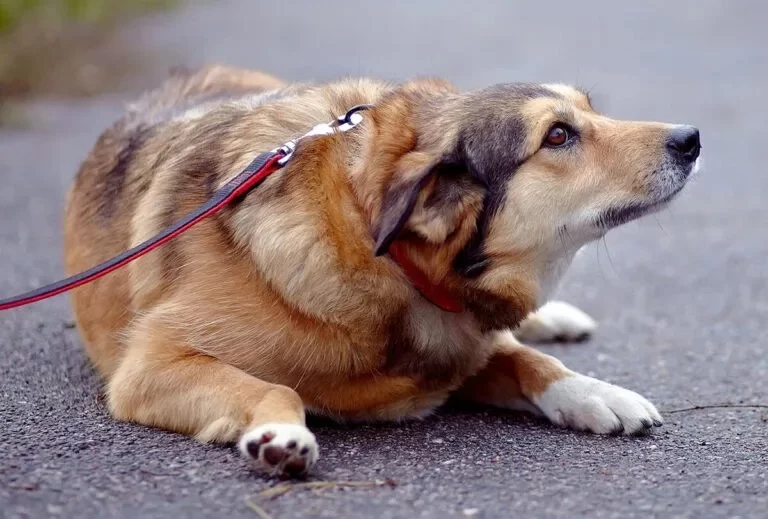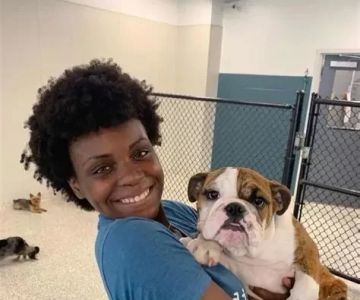1. Understanding Dog Anxiety After Abandonment
Abandonment can leave lasting emotional scars on dogs, often leading to anxiety and behavioral issues. When a dog has been abandoned, it can feel confused, fearful, and vulnerable. This trauma often results in separation anxiety, fear of people, or even aggressive behaviors. Understanding these emotions is the first step in helping them recover.
Dogs are incredibly loyal and can develop deep bonds with their owners. When they experience abandonment, it can trigger feelings of insecurity and loss. Some dogs may have difficulty trusting new owners or environments, while others may isolate themselves or show signs of depression. It's crucial to recognize these symptoms so that effective help can be provided.
2. Identifying Signs of Anxiety in Dogs
Before diving into the solutions, it’s important to recognize the signs of anxiety in your dog. Common symptoms of anxiety in abandoned dogs include:
- Excessive barking or whining
- Pacing or restlessness
- Destructive behavior, such as chewing furniture
- Urinating or defecating in the house (especially in response to triggers)
- Avoiding human interaction or retreating to a hiding spot
- Loss of appetite or difficulty eating
If you notice any of these signs, it is a clear indicator that your dog is struggling with anxiety, and prompt action is needed to help them feel safe and secure once again.
3. Creating a Safe, Comfortable Environment
One of the most important steps in helping a dog with anxiety after abandonment is creating a calm and stable environment. Dogs need to feel secure in their surroundings, and a comfortable space can significantly reduce anxiety.
Start by providing a quiet area where your dog can retreat and relax. This could be a designated bed or a small crate that they feel safe in. Keep the environment free from loud noises or chaotic activity, as sudden movements or sounds may trigger anxiety. You can use calming scents such as lavender or pheromone diffusers that help dogs feel at ease.
Establish a routine for feeding, walks, and playtime. Routine can help a dog feel more secure by knowing what to expect throughout the day. Consistent timing in daily activities can foster a sense of stability, which is essential for a dog recovering from abandonment.
4. Gradual Exposure to New Experiences
After abandonment, dogs may have difficulty trusting new people or environments. It's essential to approach their recovery with patience and understanding. Gradual exposure to new experiences, people, and places can help your dog regain confidence.
Start by introducing new environments slowly. Take your dog on short walks or to less crowded places before gradually increasing exposure. When introducing new people, allow your dog to approach them at their own pace. Avoid forcing interactions, as this can increase anxiety.
Positive reinforcement is key. Reward calm behavior with treats and praise. Over time, your dog will associate new experiences with positive outcomes, helping to reduce fear and anxiety.
5. Training and Behavior Modification
Training can be a crucial part of helping your dog manage anxiety. Techniques like desensitization and counterconditioning can help address behavioral issues caused by abandonment.
For example, desensitization involves gradually exposing your dog to situations that cause anxiety, such as being alone for short periods and slowly increasing the duration. During this process, it's important to stay calm and reassuring so your dog feels safe.
Counterconditioning focuses on changing your dog’s emotional response to stressful situations. If your dog becomes anxious during car rides, for example, pair the experience with something positive, like a favorite treat or toy, to make the car ride a pleasant experience over time.
Consistent training, along with positive reinforcement, can help your dog learn to manage their anxiety and build trust with you as their new owner.
6. Seeking Professional Help
If your dog’s anxiety continues to affect their well-being despite your efforts, it may be time to seek professional help. A veterinarian or certified dog behaviorist can provide a tailored plan to address your dog’s specific needs.
A vet may recommend medications or supplements to help manage severe anxiety, in combination with behavioral therapies. Professional trainers can also provide in-depth training and support, ensuring that your dog receives the care they need to fully recover from abandonment trauma.
For additional support, visit Hidden Brook Veterinary for expert advice, resources, and services tailored to your dog’s unique needs.











